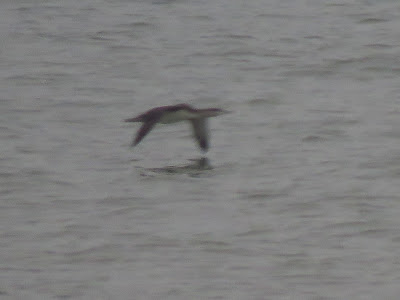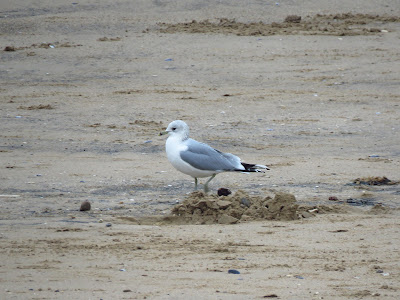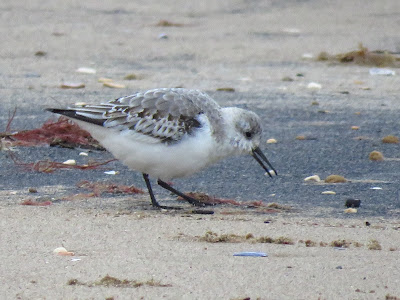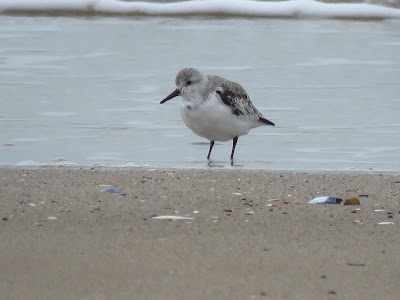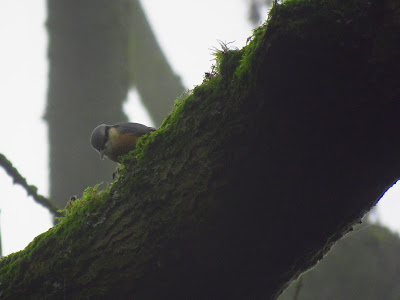I hadn't been to Bridlington for a whole year and this had to be addressed. Bridlington is a short, 45 min trip away in the train. The harbour area and the beaches are a must visit, where I usually search for the local Purple Sandpipers and Sanderlings, and can enjoy the Great Black-backed Gulls, present year round. Today, a cold, grey but still day, I was keen to explore the relatively new Gypsey Race Park, opened in 2019. the Gypsey Race is an intermittent river, fed from springs in the chalk of the Yorkshire Wolds, which runs on the Great Wold Valley. It is a permanent stream from Rudston, but upstream of this village it only runs on the surface in wet years. The stream crosses Bridlington and ends at the harbour, although it is culverted in several stretches in the town. The Gypsey Race Park is a renaturalisation scheme funded by the EU regional development fund, around the chalk stream, making it into a wildlife corridor, improving its flood resilience and making it more wildlife friendly. It is a regeneration scheme, improving access and acting as a focal area to enhance community use. Several areas around the stream have been made into green space. As I left the train station, I felt like I was stepping into a completely new place, the area in front of the station has been converted into a plaza, linking with the new park, just next door. The new park stretches along Hilderthorpe Road.
I explore west first, towards B&Q. The stream wasn't running very high, but it was running over its chalk bed, and the marginal vegetation is natural. There are a number of good quality information panels, illustrating the fauna that lives in the Gypsey Race, the various trees planted along its margins and the history of the Gypsey Race in Bridlington, including the several water mills that were by its banks.

I am very impressed with the Gypsey Race Park. It changes completely the feel of the town as you step out of the train station. This will be my new favourite route to Bridlington harbour!
I get to the harbour an hour after high tide. I walk to the south pier and spot some Purple Sandpipers feeding on the launching ramp. They seem restless, and they wait for waves to recede to go on the base of the sea wall to feed.
After a walk around the harbour, the tide is low enough for a walk along the south beach. There is a lot of seaweed on the tideline. This includes a lot of food, which is being exploited by a range of birds.


















